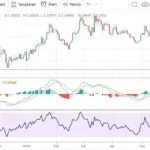Here’s a detailed look at Global Fintech Funding Trends: Where Is the Money Going? — key insights, sectors drawing capital, regional shifts, and what to watch out for. If you want I can also give you Malaysia-/ASEAN-specific trends afterward.
Overview: A Slower But Strategic Climate
- Global fintech funding has cooled compared to recent peaks. After strong years (especially 2021–2023), investors are more cautious. (KPMG)
- In the first half of 2025 (H1’25), total fintech investment was US$44.7 billion across ~2,200-odd deals. This is down from US$54.2 billion in H2’24. (KPMG)
- M&A and private-equity investments have dropped more sharply; VC remain relatively resilient. (KPMG)
So the theme: less about expansion at all cost, more about strategic growth, efficiency, and risk control.
Top Sectors Drawing Investment
These are the fintech segments that are getting the lion’s share of attention and capital in 2025:
| Sector | Key Drivers / What’s Hot | Some Figures & Trends |
|---|---|---|
| Digital Assets / Crypto / Stablecoins | Regulatory clarity in some markets, interest in remittances, payments, cross-border use; infrastructure, exchanges, tokenization, etc. (KPMG) | Digital assets got ~US$8.4 b billion in H1’25. That’s approaching or exceeding many previous full-year totals. (KPMG) |
| AI / Machine Learning / GenAI in Fintech | Improving risk, fraud detection, customer experience, cost efficiencies; embedded AI agents; automation of compliance workflows. (KPMG) | AI‐enabled fintechs pulled ~US$7.2 b in H1’25, which is already close to some full-year figures from past years. (KPMG) |
| RegTech / Compliance / Risk | As regulators tighten oversight globally, and as fintechs scale internationally, tools for KYC, AML, reporting, risk analytics are in demand. GenAI is also being used here. (ncfacanada.org) | Regtech saw ~US$2.1 b across ~190 deals in H1’25. (ncfacanada.org) |
| InsurTech / WealthTech | Customers expecting more personalization; embedded insurance; better risk modelling; and wealth platforms that use digital & AI tools. Consolidation is happening. (ncfacanada.org) | Insurtech did ~US$4.8 b in H1’25 across many deals. WealthTech is smaller but growing, especially where AI is involved. (ncfacanada.org) |
| Payments | Historically, payments have been a core fintech vertical. But in H1’25, investor enthusiasm cooled; fewer mega-deals. In emerging markets though, there remains interest. (KPMG) | Global investment into payments in H1’25 was US$4.6 b — the lowest recorded for that sector. (KPMG) |
Regional / Market Trends
Where money is going depends heavily on geography. Here are some of the major shifts:
| Region | What’s Happening | Key Highlights |
|---|---|---|
| Americas (especially USA) | Still the largest chunk of fintech funding; though deal count is down, average deal sizes are up. Investors are being selective. (KPMG) | |
| EMEA (Europe, Middle East, Africa) | EMEA saw some growth in H1’25 versus H2’24, especially in areas like regtech, insurtech, and digital asset infrastructure. Some Middle Eastern markets are becoming more active due to favorable regulation or government support. (KPMG) | |
| Asia-Pacific (APAC) | More mixed results. Investment has dropped compared to previous years. However, strong spots are India, Singapore; emerging opportunity in Southeast Asia. Regulations and macroeconomic headwinds play a part in dampening enthusiasm. (KPMG) | |
| Latin America | It’s a region to watch. Despite global caution, Latin American fintechs have shown resilience, especially in digital payment & fintech services for the unbanked / underbanked. (S&P Global) |
What’s Changing: Themes & Investor Behavior
Here are some of the deeper shifts that explain where the money is going, and why:
- Efficiency & Profitability over Pure Scale
Startups are under pressure to show path to profits or at least sustainable unit economics. Growth-at-any-cost is less acceptable. Investors are digging into margins and risk. (mondaq.com) - Regulation Matters More Than Ever
Clear regulatory frameworks (for crypto, stablecoins, digital payments) are drawing investment. Jurisdictions with regulatory uncertainty are often passed over. RegTech and compliance tools are key. (KPMG) - Mega Rounds Concentrated in Winning Verticals
While the number of deals has dropped, large rounds continue in “winners” — digital assets, AI, payments infrastructure, etc. That means the fat (capital) tends to go to fewer companies but with larger scale. (S&P Global) - Embedded Finance & Infrastructure
Not just end-user apps. There’s rising interest in building the plumbing: APIs, compliance, cross-border payment rails, tokenization, FI (financial institution) back-end. These are seen as more defensible and with recurring revenue potential. (Malay Mail) - Geographic Shifts & Emerging Markets
Where regulation + market demand align, capital is shifting. Markets like India, parts of Southeast Asia, Middle East are getting more prominent. Emerging markets are compelling due to large populations still underbanked, rising smartphone penetration, etc. But investor caution remains due to macro risks. (Coinspaid Media)
Risks & Challenges
Investors aren’t blind to the risks, and these are factors that could moderate or shift the trends:
- Regulatory uncertainty, especially in crypto / digital assets in many jurisdictions. Unexpected policy changes can spook capital.
- Macroeconomic headwinds: interest rates, inflation, recession risks. These affect both cost of capital and consumer/user spending.
- Valuation corrections: many fintechs saw very high valuations in earlier years; now those are being scrutinized.
- Competition & saturation: particularly in payments or consumer fintech, the crowded field means differentiation is harder.
- Exit environment: IPOs, acquisitions are key for returns. If liquidity dries up, investment will slow further.
What to Watch For in the Rest of 2025 / Early 2026
- Will AI / GenAI continue to dominate? Especially in internal operations, risk, compliance, customer engagement. Companies that do not embed AI may fall behind.
- How will regulation evolve globally for stablecoins, crypto exchanges, DeFi? Those will shape how big those sectors can grow.
- Will we see consolidation (mergers/acquisitions) especially in mature markets or between startups and incumbents?
- Growth in embedded finance, cross-border payment infrastructure, and “invisible” finance (wallets, BaaS) could accelerate.
- How resilient are emerging market fintechs to macro shocks, currency fluctuations? They offer high reward but also high risk.
Conclusion
Global fintech funding in 2025 is reflecting a maturing market. Investors are more selective, prioritizing efficiency, regulation compliance, and scalable or defensible architectures (infrastructure, digital assets, AI). While overall funding is lower than the peaks, some sectors are thriving. For startups or investors, the key is to align with these high-momentum areas and to manage risk carefully.














